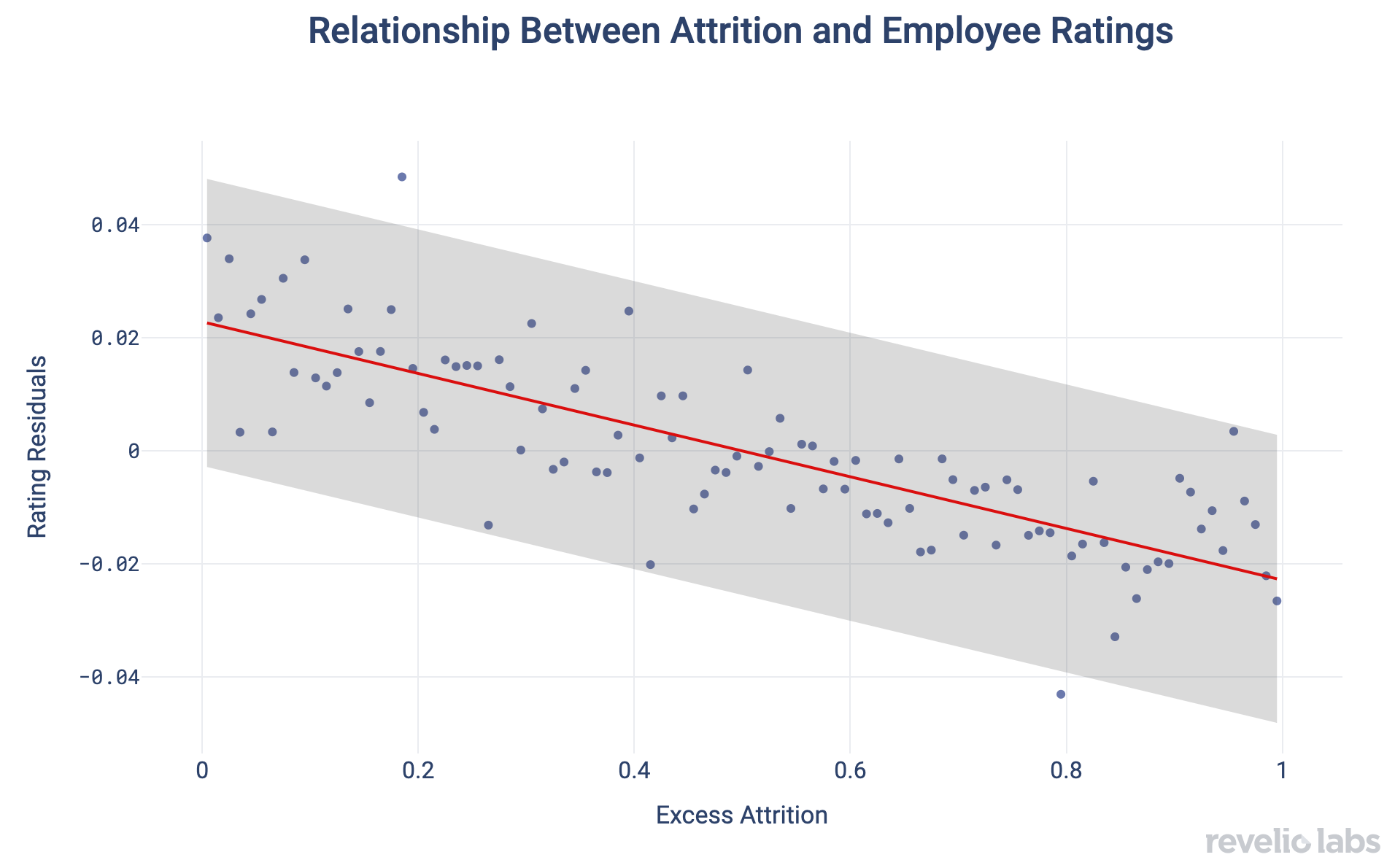Want to Know Where Revenue is Headed? Look at this Metric
And check in on your own salespeople

It stands to reason that salespeople leaving a company in droves is a bad sign, especially if that company depends heavily on selling products or services. But what does the data actually say about the consequences of high or low sales turnover? This week, Revelio Labs looks at how company revenues and employee sentiment are actually affected when sales attrition varies.
Pharmaceutical and medical device companies specifically depend heavily on sales. By looking at Abbott Laboratories as an example, we can see what happens to revenue when a company manages to reduce sales workforce attrition:


Quite notably, it wasn’t until Abbott Laboratories reduced sales attrition that revenues started rising. Similarly, when controlling for company and time effects, we see that a 10% decrease of sales attrition leads to 7% higher revenues 6 months later. While the effect of lower sales workforce attrition takes time to come into full force, it ultimately appears to help companies meet their sales targets and improve revenues.


Sign up for our newsletter
Our weekly data driven newsletter provides in-depth analysis of workforce trends and news, delivered straight to your inbox!
But what about employee morale? Wouldn’t we expect variations in sales attrition to have an impact on how all employees feel about the company? In the case of Abbott Laboratories, there is another distinctly negative relationship between the two types of analytics: when attrition falls, ratings increase.


This relationship also holds for other firms. Low attrition rates are associated with higher overall employee ratings. We find that on average, a 10 percent decrease in attrition, leads to 6 percent higher employee satisfaction ratings after six months. This could possibly be due to a mix of good company performance leading to positive employee outlooks, and a lower burden on the sales teams when attrition is low and work can be more evenly distributed among more employees.


Key Takeaways:
- Sales attrition is often used as an indicator for the health of a company, and whether it is likely to meet its sales targets.
- We find clear negative and statistically significant associations between the level of attrition and later revenues, so low attrition rates are associated with higher revenues, and vice versa.
- There is also a negative correlation between attrition and employee satisfaction where low attrition rates are particularly strongly associated with good employee morale.
If you have any ideas of other types of analytics or would like to hear more about Revelio Labs, please feel free to reach out to us. You can also check out other newsletters on future financial performance, including one on salary data here and overall attrition here.


